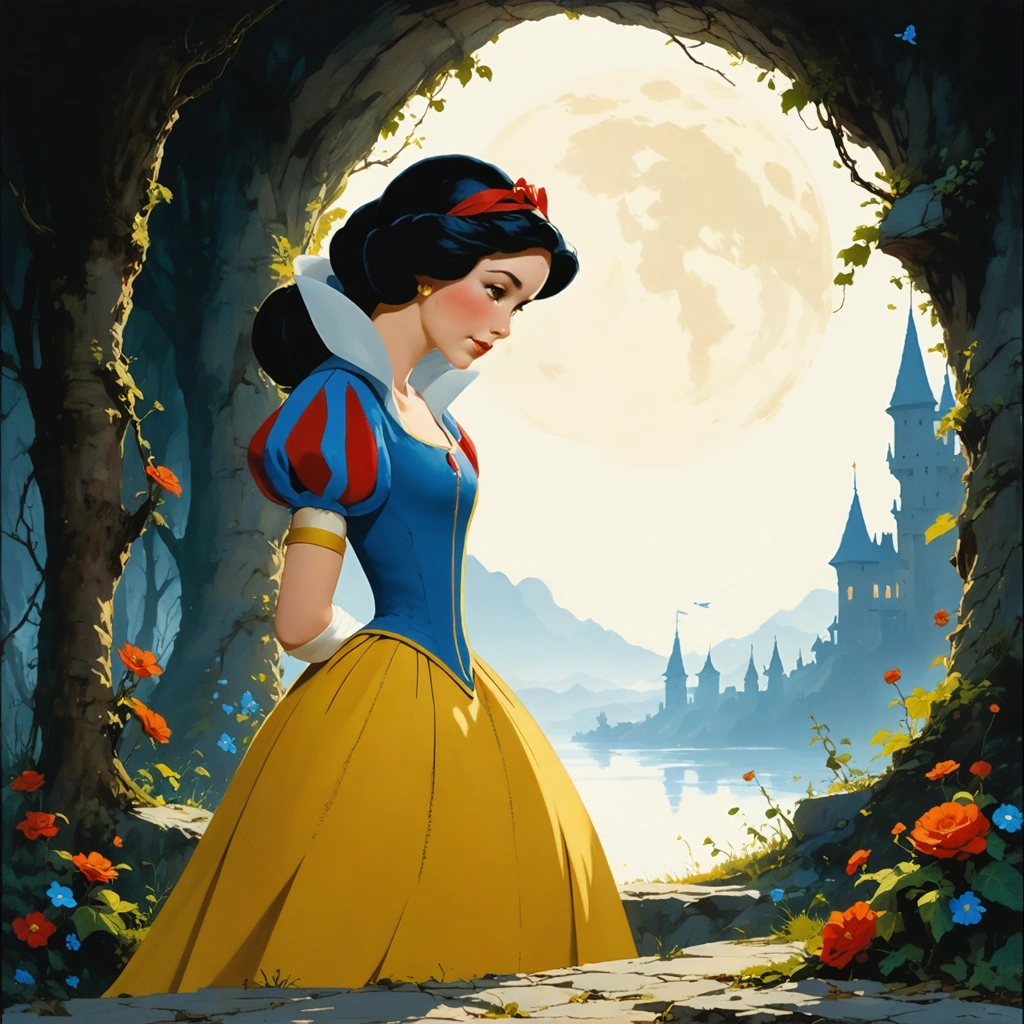
From the moment the first whispered tales of a princess with skin as white as snow and lips as red as blood entered the collective imagination, the story of Snow White has held an unshakable grip on hearts worldwide. But why does Blanca Nieves — as she is lovingly known in Spanish-speaking cultures — continue to captivate audiences centuries after the Brothers Grimm penned her tale? What is it about the Snow White prince’s role, the magic of the enchanted forest, or the sinister beauty of the wicked queen that refuses to fade? This article dives deep into the enduring appeal of Snow White, exploring how her story transcends time, culture, and medium to become a true classic.
A Tale as Old as Time: Why Blanca Nieves Still Resonates
Consider this: in an age dominated by high-tech blockbusters and sprawling fantasy sagas, a simple fairytale about a young woman, seven dwarfs, and a poisoned apple remains influential enough to inspire countless adaptations. From early silent films to Disney’s iconic 1937 animated masterpiece, and more recently to Spanish-language reinterpretations like the hauntingly beautiful Blancanieves, Snow White’s narrative has never lost its spark.
At its core, the story taps into universal themes — innocence, jealousy, resilience, and the redemptive power of love — that feel as fresh today as they did hundreds of years ago. Yet, it’s not just the plotline that enchants; it’s the way each retelling reflects the culture it inhabits. The Snow White prince, for example, is not just a character waiting to awaken the heroine but often symbolizes hope, courage, and societal ideals that shift with time.
What Makes a Fairytale 'Classic'?
- Timeless Themes: Issues like good vs. evil and innocence vs. corruption resonate across generations.
- Adaptability: The ability to be retold in many forms — books, films, theater, even modern TV shows — keeps the story alive and relevant.
- Cultural Reflection: Each version mirrors the values, fears, and dreams of its era, adding layers to the narrative.
Blanca Nieves perfectly embodies these traits, which explains her pervasive presence in our storytelling traditions.
Unpacking the Snow White Prince and the Enduring Allure of Blancanieves
When we think of Snow White, the image of the prince often comes to mind — the charming figure whose kiss breaks the spell and brings new life. But the Snow White prince is far more than a romantic device. He is a symbol of salvation, a beacon of light amid darkness, and sometimes a reflection of shifting gender roles depending on the interpretation.
Take the 2012 Spanish film Blancanieves, for example. This black-and-white silent movie reimagines the fairytale in a haunting, poetic style, placing a stronger emphasis on the heroine’s inner strength and agency. Here, the Snow White prince is present but more nuanced, showing how cultural retellings can redefine familiar characters while honoring the original tale’s spirit.
Through such adaptations, the story remains alive, inviting each generation to see Blanca Nieves—and her prince—in a new light.
Why Does This Matter Today?
In a world saturated with stories, the persistence of Snow White’s tale offers more than nostalgia; it provides a mirror to our evolving values and a touchstone for cultural identity. Whether you grew up hearing “Blanca Nieves” at bedtime or watched the classic Disney version, the story’s magic continues to inspire conversations about beauty, power, and kindness.
In the rest of this article, we’ll journey through Snow White’s cinematic milestones, cultural significance, and the timeless charm that keeps Blanca Nieves relevant in both hearts and screens worldwide. Ready to uncover the magic behind the mirror? Let’s step into the fairy tale.

Snow White: Fairytale’s Lasting Charm
Why Does Blanca Nieves’ Story Endure as a Cultural and Cinematic Classic?
The tale of Blanca Nieves, or Snow White as she is widely known, has captivated audiences for centuries due to its timeless themes of innocence, jealousy, and the triumph of good over evil. Originating from European folklore and popularized by the Brothers Grimm in the 19th century, this story has transcended its origins to become a global cultural icon.
Its endurance owes much to the universal appeal of its characters and moral lessons. The narrative of a young princess betrayed by envy but ultimately saved by love and kindness resonates deeply across generations and cultures. This universality explains why Blanca Nieves remains relevant, inspiring countless adaptations in literature, theater, and film.
Moreover, the cinematic portrayal of Snow White, especially Walt Disney’s 1937 animated film, marked a revolutionary moment in animation history. Disney’s "Snow White and the Seven Dwarfs" was the first full-length cel-animated feature, setting a new standard for storytelling and artistry in cinema. This milestone helped cement the story’s place in popular culture worldwide.
What Are the Key Elements That Make the Story of Blanca Nieves So Endearing?
The charm of Blanca Nieves lies in several core elements that consistently engage audiences:
- Relatable Characters: Blanca Nieves’ innocence and purity contrast sharply with the evil queen’s vanity and cruelty, creating a compelling conflict.
- Symbolic Imagery: Iconic images like the poisoned apple and the glass coffin symbolize danger and preservation of innocence.
- The Role of the Snow White Prince: The prince’s arrival and awakening of Blanca Nieves symbolize hope, renewal, and true love’s power.
- Magical Elements: The presence of dwarfs, magic mirrors, and enchanted forests adds a fantastical dimension that fuels imagination.
- Moral Lessons: Themes of jealousy, kindness, and redemption provide meaningful takeaways for audiences of all ages.
These elements work together to create a rich narrative tapestry that appeals to both children and adults, ensuring the story’s longevity and cultural significance.
How Has the Character of Blanca Nieves Evolved Across Different Adaptations?
Blanca Nieves has been reinterpreted in various cultural contexts, leading to diverse portrayals that reflect changing societal values and artistic trends. For example:
- Classic Literary Versions: Early versions emphasize innocence and victimhood, often focusing on moral lessons.
- Disney’s Animated Film: Portrays Blanca Nieves as gentle and nurturing, embodying idealized femininity of the 1930s.
- Modern Retellings: Recent adaptations, such as the Spanish film "Blancanieves" (2012), reimagine the story with darker tones, feminist perspectives, or unique cultural twists.
- Contemporary Media: TV series, novels, and video games often explore Blanca Nieves with greater agency and complexity, sometimes portraying her as a proactive heroine rather than a passive figure.
This evolution underscores the story’s flexibility and its capacity to reflect contemporary issues while preserving core motifs.
Who Is the Snow White Prince, and What Role Does He Play in the Story?
The Snow White prince is a pivotal figure who symbolizes salvation and the restoration of order. Traditionally depicted as a noble and courageous character, the prince’s role is to awaken Blanca Nieves from the poisoned sleep, often through a kiss or gesture of true love.
This act represents several deeper themes:
- Love as a Redeeming Force: The prince’s intervention signifies the power of love to overcome evil and death.
- Hope and Renewal: His arrival marks the end of suffering and the beginning of a new, harmonious chapter.
- Gender Roles and Ideals: Historically, the prince embodies traditional masculinity and the heroic rescuer archetype.
In modern interpretations, the prince’s character sometimes gains more depth, showing vulnerability or partnership, reflecting evolving societal attitudes toward gender dynamics.
Why Is the Spanish Film "Blancanieves" Important in the Legacy of Blanca Nieves?
"Blancanieves," a 2012 Spanish silent film directed by Pablo Berger, is a remarkable reinterpretation of the Snow White tale that brings new artistic and cultural dimensions to the story. Set in 1920s Andalusia, it combines the traditional narrative with elements of flamenco culture and bullfighting, offering a fresh and poignant perspective.
This adaptation stands out because:
- It Revives Silent Cinema: Using silent film techniques pays homage to early cinema while creating a unique viewing experience.
- It Emphasizes Female Empowerment: The protagonist is portrayed with greater agency and emotional complexity.
- It Highlights Cultural Specificity: Incorporating Spanish traditions enriches the universal tale with distinctive local color.
- Critical Acclaim: The film received international awards and praise, reinforcing the story’s relevance in contemporary art.
By blending classic motifs with innovative storytelling, "Blancanieves" exemplifies how Blanca Nieves’ story continues to inspire and evolve.
What Makes Snow White a Perennial Favorite in Popular Culture?
Snow White’s lasting popularity can be attributed to:
- Universal Themes: The story’s exploration of envy, innocence, and redemption resonates across cultures.
- Adaptability: The narrative can be reshaped to fit different eras, audiences, and artistic styles.
- Iconic Imagery and Characters: Memorable symbols and archetypes keep audiences engaged.
- Cross-Media Presence: From books and films to merchandise and theme parks, Snow White maintains visibility and relevance.
- Emotional Connection: The combination of fantasy and relatable human emotions fosters deep audience attachment.
These factors ensure that Blanca Nieves remains a beloved figure, inspiring new generations to discover and reinterpret her tale.



